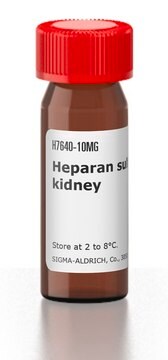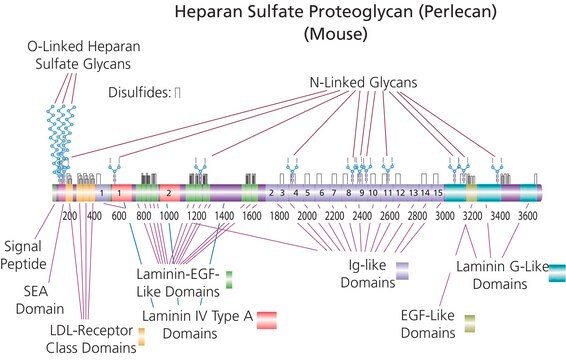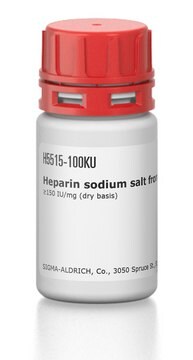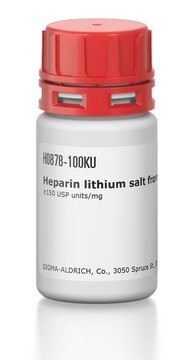H4784
Heparin Natriumsalz aus Schweinedarm
≥180 USP units/mg
About This Item
Empfohlene Produkte
Biologische Quelle
Porcine intestinal mucosa
Qualitätsniveau
Form
powder
Spezifische Aktivität
≥180 USP units/mg
Löslichkeit
H2O: 50 mg/mL, clear, colorless to faintly yellow
Kationenspuren
Ca: ≤20 ppm
Lagertemp.
2-8°C
SMILES String
[Na+].[S](=O)(=O)(NC1C(OC(C(C1O[S](=O)(=O)O)OC4OC(C(C(C4O[S](=O)(=O)O)O)O)C(=O)O)CO)OC2C(OC(C(C2O)O[S](=O)(=O)O)OC3C(OC(C(C3O)NC(=O)C)O)CO[S](=O)(=O)O)C(=O)O)O
InChIKey
JRTRSJGZMRQDHI-UHFFFAOYSA-N
Suchen Sie nach ähnlichen Produkten? Aufrufen Leitfaden zum Produktvergleich
Allgemeine Beschreibung
Qualität
Lagerklassenschlüssel
11 - Combustible Solids
WGK
WGK 2
Flammpunkt (°F)
Not applicable
Flammpunkt (°C)
Not applicable
Persönliche Schutzausrüstung
Eyeshields, Gloves, type N95 (US)
Hier finden Sie alle aktuellen Versionen:
Besitzen Sie dieses Produkt bereits?
In der Dokumentenbibliothek finden Sie die Dokumentation zu den Produkten, die Sie kürzlich erworben haben.
Kunden haben sich ebenfalls angesehen
Artikel
Glycosaminoglycans are large linear polysaccharides constructed of repeating disaccharide units.
Protokolle
This protocol describes a method for culturing TS cell lines. These cells can then be used to study trophoblast differentiation and placental function.
In Situ Hybridization of Whole-Mount Mouse Embryos with RNA Probes: Hybridization, Washes, and Histochemistry. This is a protocol describing how to perform in situ hybridization on whole mouse embryos. Here we describe the hybridization procedure, and the localization of the DIG-labeled RNA using a conjugate of anti-DIG Fab antibody and calf intestinal alkaline phosphatase. Enzyme activity of the reporter is detected by a color reaction, resulting in the formation of a water-insoluble purple/blue precipitate. Manipulating the Mouse Embryo - Third Edition
Unser Team von Wissenschaftlern verfügt über Erfahrung in allen Forschungsbereichen einschließlich Life Science, Materialwissenschaften, chemischer Synthese, Chromatographie, Analytik und vielen mehr..
Setzen Sie sich mit dem technischen Dienst in Verbindung.









